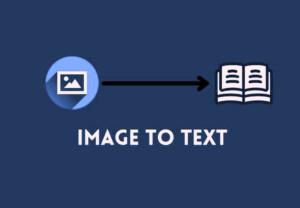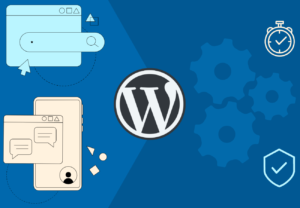Learn some tips to help retain Business AI Innovators amid the ever-evolving and ongoing talent search wars. Notwithstanding, Artificial Intelligence (AI) is the game-changing technology of our time, but the hype and confusion can be overwhelming… Join our professional Web Tech Experts and Webtechex team for clarity, collaboration, and growth ideas that can revamp your team.
Furthermore, our partners, such as AIC (AI Innovators Community), have a free membership that gives you access to content and community to help you and your company scale. However, they are an invite-only community of innovators, industry leaders, founders, and operators — they are driven to learn new things, seek feedback, grow their networks, and succeed in their careers.
Be that as it may, if you would be an excellent fit for the AI Innovator Community and are interested in learning more, write to them or contact an existing community member – they will be happy to help you! At the same time, if you do not know someone in the community, a few guidelines on their official website can help you locate them for an invite. The process is also straightforward!
As mentioned, the artificial intelligence field is experiencing fierce competition for top talent. Thus, acquiring the leading AI experts for your business technology development and management is invaluable. It would help to have an eye for seamless team collaboration – AI projects often involve cross-functional team collaboration, so effective communication and adaptability are necessary.
Understanding How Professional Business AI Innovators Help Foster Technology
In the ever-evolving technology world, employee-created innovations must blossom beyond the original innovator to have the most significant impact. Still, new research points to a puzzling phenomenon: employees often keep their innovations under wraps, limiting their diffusion. The research confirms the role of organizational culture in supporting technological and business innovation.
Leaders shouldn’t necessarily default to an assumption that their team will openly reveal their ideas. Technically, the Business AI Innovators in entities is a trajectory from concept to customer — where employees are keen to step up and show their ideas. Moreover, this revolutionary scenario happens in cultures incorporating psychological safety, perpetual learning, and empowerment.
On that note, business leaders must promote global collaborative models that elevate the best ideas. At the same time, employees have an equally significant role in showing up for each other daily. The links are inextricable. Notwithstanding, tech giants, startups, and non-tech companies are racing to build AI capabilities, and the demand for skilled AI practitioners far exceeds the supply.
As a result of the fast breakthrough in Artificial Intelligence (AI) Technology, the future of revolutionary business development is undergoing remarkable transformation. Be that as it may, as a brand owner/manager, retaining an all-star Business AI Innovators task force and team members has become a business-critical priority for any organization pursuing AI-driven technology.
Getting To Know Why Talented Workplace Employees Leave The Company
AI is potentially the most powerful technology humans have ever invented. The machines we created to do our physical work for us eventually surpassed humans in strength and speed, and we believe that AI will ultimately do that for mental work as well. But despite the vast possibilities of AI technology, the industry seems stuck in many places. AI has hit an adoption plateau for all businesses.
Losing your best AI talent to poachers or attrition can set your initiatives back years. In other words, losing Business AI Innovators, even if it’s a single irreplaceable AI expert, can negatively impact your organization for years. Retaining your cherished innovators must be priority one. On the contrary, your crucial business aim should prioritize putting your workplace community first.
Eventually, your goal should be to connect people, industries, and organizations in ways that have no agenda other than learning and growing. This can lead to those nonzero-sum outcomes. For instance, psychological safety is when employees feel comfortable asking for help, sharing suggestions informally, or challenging the status quo without fear of negative social consequences.
Unlike before, AI is unusual because its innovative technology and ever-evolving tools can learn and adapt. As humans, we need this connection to learn from each other, better understand where AI is going, and collaborate on long-term visions around all kinds of outcomes. There are a few reasons why the retention of business AI innovators is an element that deserves urgent focus.
Consider the following:
- Career Knowledge Drain:— When longtime team members leave, they take tremendous institutional knowledge. Rebuilding that technical depth and experience is neither quick nor easy.
- Recruiting Process Lag:— Given the small pool of qualified AI experts, refilling empty roles often requires months of searching, networking, and interviewing. Project timelines grind to a halt.
- Lost Talent Opportunities:— The innovations, patents, and insights that might have come from departed talent are now gone—their untapped potential leaves with them.
- Brand Culture Disruption:— The exit of respected leaders can demoralize the remaining staff. Team cohesion and momentum take a hit. It destabilizes the environment.
- Competitive Advantage Erased:— Your former star employees may join a competitor. Soon, their inside expertise strengthens your rival’s capabilities instead of yours.
To develop effective retention tactics, understand why valued employees, especially business AI innovators, often quit.
Such as follows:
- Limited Career Growth:– AI researchers want ongoing challenges to build new skills. Dead-end roles lead to boredom and frustration.
- Being Left Out:– AI experts desire involvement in high-potential projects improving lives, not just incremental tasks. Misalignment demotivates.
- Poor Cultural Fit:– Toxic team dynamics, undisciplined workflows, bureaucracy, and other cultural issues create an unpleasant environment.
- Workplace Burnout:– The intense pace of AI development leads to exhaustion without enough resources for recovery and work-life balance.
- Payment Inequity:– Given AI talent scarcity, they often have lucrative external offers if compensation is below market rates.
- Uninspiring Leadership:– Disengaged or short-sighted management fails to connect work to a compelling vision that energizes staff.
On the one hand, as a business owner or company manager, you must take these common pain points seriously. On the other hand, targeted improvements to the work experience can eventually help address the underlying causes of unwanted attrition.
Steps To Craft An Effective Retention Strategy For Business AI Innovators
Determining which skills make up the perfect business AI innovators is paramount. Technical skills such as machine learning, deep learning, and Natural Language Processing (NLP) should certainly not be discounted when looking for candidates. Soft skills also play a significant role in employee retention– look for strong problem solvers with analytical and critical thinking expertise.
Unveiling their multifaceted skills while understanding their technical prowess should remain at the core— your ideal innovative AI developers wear many hats. This includes machine learning, deep learning, NLP skillsets, domain expertise, cloud computing know-how, data engineering acumen, security awareness, regression testing, data management, etc. Learn more in this video guideline:
Since job descriptions are your first impression of potential talent, create something compelling! Avoid generic templates by providing more in-depth details of the role itself and company culture, including challenges your team faces, the impact their work will make, and opportunities for growth and learning – top talent want more than a mere job; they seek meaningful career journeys!
Standard employee retention programs may be insufficient for these unique roles. If you want to Hire Artificial Intelligence Engineers, you need customized approaches. Let us explore other proven strategies to hold onto your irreplaceable hiring and retention process of business AI Innovators and engineers in today’s competitive and hypercompetitive talent search market.
1. Offer Autonomy And Flexibility
When searching for business AI innovators, realizing their roles demand intense concentration and creativity is essential. Furthermore, mandatory rigid schedules or micromanagement stifle productivity for top technical talent. Get beyond technical questions when planning interview sessions. Create sessions to note problem-solving capabilities and critical thinking abilities.
You can focus on:
- Flexible work options – remote, hybrid, flexible hours
- Looser vacation and time off policies
- Autonomy over projects and work methods
- Support experimenting with new ideas
- Results and impact matter more than close supervision
In addition, get beyond technical questions when planning interview sessions. Create sessions that evaluate candidates’ problem-solving capabilities, critical thinking abilities, and communication abilities through real-world scenarios or open-ended questions; this allows you to gauge their thought processes and approach to challenges more precisely.
2. Build An Inspiring Community Culture
Beyond the specific role, your organization’s culture should offer purpose, belonging, and growth.
Cultivate this through:
- An emotionally intelligent management team who shows genuine care for staff well-being
- Social events, offsite, and other bonding experiences
- Diversity and inclusion programs that celebrate different voices
- Mentorship initiatives connecting junior and senior staff
- Open communication channels inviting feedback
Look for tech-skilled candidates and revolutionary business AI innovators with communication abilities through real-world scenarios or open-ended questions. As a result, this allows you to gauge their thought processes and approach to challenges more precisely. Also, consider tailoring assessments or case studies specifically tailored to your needs and enable a self-aware direction.
3. Invest In Ongoing Learning
First, lifelong education is integral in a rapidly changing field like AI. Secondly, you can enable continuous growth through various aspects.
Such as follows:
- Conference and workshop attendance
- Access to papers, books, and publications
- Cross-training and rotation across focus areas
- Sabbaticals for extended study
- Sponsorship for advanced degrees and certifications
- Challenging in-house seminars from visiting experts
Recruitment is just one step; to truly empower developers to excel with AI requires cultivating an environment that welcomes experimentation and provides ongoing training. In other words, it’s creating an ecosystem that promotes innovation – not simply hiring the necessary talent once. Building an excellent team should be seen as an ongoing journey rather than something achieved in one go.
4. Provide Cutting-Edge Resources
Showcase your commitment to artificial intelligence innovation and internal research initiatives, collaboration with top institutions, and opportunities for working on cutting-edge projects. Provide generous benefits packages, including access to high-performance computing resources, training programs, and flexible work arrangements that foster employee satisfaction and retention.
Typically, business AI innovators need powerful AI tools to execute their vision. Don’t let limited resources delay their work.
You can provide:
- Access to large datasets, GPU clusters, and models
- The latest software, libraries, and cloud services
- Exploration budgets for new equipment
- First chance at prototypes and new infrastructure
- On-demand technical support to unblock bottlenecks
By holistically strengthening work experience, culture, development, trust, and balance, companies can build an environment where AI innovators choose to stay and thrive. With deliberate retention efforts, the impact of losing top talent diminishes. Making the hiring process of Artificial Intelligence Engineers feel genuinely valued—not taken for granted—is the foundation for long-term retention.
5. Merge Your Workplace With External Environment
AI developers want to see their work matter. Demonstrate concrete positive human outcomes enabled by their efforts.
Empower them through:
- Client case studies and user stories
- Product demos at internal meetings
- Opportunities to gather customer feedback
- Company PR featuring their projects
- Volunteering initiatives where they can apply AI expertise for good
Your top talent requires more than just compensation from your company. Showcase its commitment to innovation, ethical AI development, and culture of learning and collaboration as part of an overall offering, including benefits packages that appeal to them, such as mentorship opportunities for personal and professional growth and clear career progression paths – these things all foster loyalty while fueling creativity!
6. Try Benchmarking Competitive Compensation
While not the only factor, fair pay remains essential for retention. Avoid losing talent due to compensation lagging the market.
Things to do:
- Offer competitive base pay based on level, experience, and role type
- Ensure salary bands are revisited frequently using industry survey data
- Consider retention bonuses, equity grants, and incentive pay
- Enable participation in profits or project upside through bonuses
- Transparently communicate compensation philosophy and targets
- Proactively address any pay inequities revealed in reviews
Go beyond simply listing job responsibilities – craft an engaging narrative about their potential impact! Imagine telling candidates they will work on projects to enhance healthcare outcomes, transform customer experiences, or improve renewable energy solutions – this way, your job description becomes an appealing showcase of company values and missions, drawing in talent who share them!
7. Foster Strong Internal Team Relationships
AI developers thrive when surrounded by colleagues who appreciate and support their work. Nurture an esprit de corps within the organization.
What you can do:
- Encourage team bonding through social gatherings, gaming nights, or other informal interactions. Strong connections motivate.
- Celebrate group and individual successes visibly. Recognition from peers is robust. Share wins at meetings or events.
- Promote networking and knowledge sharing across internal teams via talks, demos, or open houses. Collaboration inspires innovation.
- Enable mentorship and coaching connections between more experienced and newer AI team members. Passing professional expertise uplifts all.
- Mediate any conflicts or misunderstandings arising due to work styles or stress. Restore relationships quickly.
- Model respect, positivity, and constructive feedback among leadership. Healthy dynamics trickle down through the ranks.
AI engineers feel part of a supportive group working together to achieve meaningful goals. Therefore, don’t underestimate the significance of teamwork, communication, and critical thinking as crucial areas for successful development. Effective dialogue builds team spirit, while adaptability enables developers to respond rapidly to changing trends and challenges.
8. Support Professional Skills Development
Your business AI innovators and technology experts need opportunities to expand their skills and take on new challenges for continuous growth.
What you can do:
- Sponsor participation in certificate programs, online courses, or advanced degree studies. Investing in learning pays dividends.
- Depending on interests, allow rotations into different focus areas like natural language, robotics, or business intelligence. Diversity of experience engages.
- Fund attendance at major conferences to stay abreast of the field’s latest advances and network with peers. Exposure sparks creativity.
- Set stretch goals for rising to the following technical or managerial responsibility level. Growth pathways inspire retention.
- Facilitate collaborations with researchers at universities or partner companies. Cross-pollination advances expertise.
- Allow sabbaticals or paid time off for more profound research dives into emerging techniques. Supporting big ideas pays off.
- Enabling professional development at all career stages keeps your AI team on the cutting edge long-term.
9. Ensure Personal Efforts Are Recognized
Most business AI innovators and technology developers want to know their work matters and is appreciated.
What you can do:
- Establish clear performance metrics tailored to different roles to measure accomplishments, not just activity. Quantify impact.
- Build recognition into regular employee and team check-ins. Praise contributions frequently and sincerely, not just annually.
- Submit remarkable projects for industry awards or positive press coverage. External validation motivates.
- Select top performers to represent the organization at conferences or advisory groups. Recognition as subject matter experts satisfies.
- Profile outstanding work in internal newsletters or external blogs. Highlight achievements organization-wide.
- When employees do leave, conduct gracious exit interviews acknowledging their contributions. Part warmly.
- Convince your talent that their work is valued, and leaving it behind would not be easy. Recognition builds an emotional connection.
Revealing hidden talent pools, think creatively! Join forces with AI research labs and universities to tap promising doctoral students looking for industry experience or explore online talent marketplaces like Toptal or Catalant, which are explicitly designed to cater to AI professionals. Moreover, international conferences or hackathons have diverse talent pipelines you’ll reward afterward.
10. Assure Job Stability And Optimize Trust
Employees must trust in leadership and the organization’s future to remain loyal.
What you can do:
- Be transparent about company strategy and performance.
- Offer reassurances and severance guarantees should layoffs be required. Reduce uncertainty anxiety.
- Avoid excessive re-organizations or leadership churn. Consistency provides stability amid industry turbulence.
- Share market analyses demonstrating the organization’s competitiveness and differentiation. Paint a confident vision.
- Discuss business funding and runway openly, signaling long-term security. Commitment builds loyalty in return.
- Resolve any paycheck, equipment, or expense reimbursement issues immediately. Operational snafus undermine trust.
- With a stable base, AI teams can focus entirely on advancing the organization’s goals without distraction or doubt.
11. Prioritize Workplace Wellness And Balance
The intense pace of AI work leads to burnout without adequate self-care.
What you can do:
- Encourage taking advantage of all vacation time without stigma. Disconnect fully.
- Discuss workload balance openly during check-ins. Adjust responsibilities if the overload is harming wellness.
- Offer access to mental health services on-site or through employee assistance programs. Reduce stigma around seeking help.
- Subsidize fitness services like gym memberships or mindfulness apps. A healthy body and mind prevent fatigue.
- Model work-life balance behaviors among leadership. Avoid excessive after-hours emails or calls.
- Monitor for signs of work addiction or avoidance of home life. Intervene compassionately if overwork becomes unhealthy.
- Preventing burnout improves sustainability. Employees who feel replenished produce their best work and stay loyal.
12. Offer Career Leadership Opportunities
AI requires holistic focus across all aspects of work life and career trajectory. With a supportive and inspiring environment, your top AI experts will choose to stay with your mission over offers from AI competitors. AI may still be disruptive moving into the future, which means there will be workplace losers and growing reasons for concern about privacy and AI/cyber-related crime.
What you can do:
- Provide management training to those interested in growing team leadership abilities. Homegrown leaders are loyal.
- Let promising individuals run pilot projects or small teams. Practice leadership in low-risk settings before promoting to more prominent roles.
- Assign mentoring and coaching to junior staff. Guiding others builds skills and empathy.
- Include individual contributors in crucial strategy decisions to develop business thinking. Exposure to more significant picture issues engages.
- Appoint rising stars to head organizational initiatives or committees. Let them drive real change.
- Consider transitioning aging leaders into advisory roles. Make space for emerging talent to lead.
- Empowering achievement-driven employees with greater responsibility retains their talents within the organization.
Also, consider tailoring assessments or case studies specifically tailored to your needs. Developing leadership potential keeps top performers challenged and invested.
13. Seek Regular Employee Input And Feedback
Realistically, non-retention initiatives can succeed without open dialogue between employees and leadership. As an innovative business owner or futuristic company manager, you must conduct periodic anonymous surveys to gauge employee satisfaction across various facets of work experience. Equally important, listen closely to pain points raised and bright spots to build on.
Host skip-level meetings where employees can transparently voice concerns and ideas to leadership outside their regular reporting lines. This removes barriers to honest feedback. Set expectations for managers to have career growth sessions during check-ins. They can discuss individual aspirations and how you can provide growth opportunities through training, projects, mentoring, etc.
What else you can do:
- Before rolling out new programs, tools, or policies, proactively gather input from a sample of employees or test groups.
- Incorporate user perspectives to improve design and adoption.
- Closely evaluate exiting employee interviews to understand their real motivations for resigning. Look for recurring themes, signaling areas needing improvement.
- Encourage informal continuous feedback through open-door policies, anonymous surveys, and suggestion boxes.
- Address frustrations early before they escalate into resignation decisions.
- For team leads and managers, provide active listening, empathy, and conflict resolution training to foster openness.
- Demonstrate receptiveness to critiques and differing views. Employees want to know their voices are heard, not suppressed or penalized.
In addition, your company should proactively seek regular input signals to employees that their perspectives are respected. This empowerment strengthens trust in leadership and the organization. Moreover, transparent dialogue lets your business AI innovators’ retention process and efforts dynamically adapt to meet employees’ motivations and needs.
14. Explore Unique Success Benefits And Perks
As a rule of thumb, employees also value various unique benefits and limitless perks beyond compensation and development. In this case, you should offer one-time sabbaticals or paid time off for long-serving employees. Usually, occasional extended breaks help recharge energy. Also, creative perks that improve quality of life build affinity and distinguish your organization.
What more to do:
- Provide generous referral bonuses for introducing candidates who get hired. Reward networking efforts.
- Allow purchase of extra vacation days. The flexibility benefits families or those pursuing hobbies.
- Relocation support retains employees if they need to move. Keep talent within the organization.
- Unique health benefits like fertility assistance or gender affirmation coverage demonstrate care for the individual.
- An annual allowance for personal development spending gives employees autonomy—budget for personal growth.
However, on the whole, we expect that individuals and societies will make choices on use and restriction of use that benefit us. Examples include likely self-driving vehicles at that time when those with deteriorating vision and an increased elderly population will make it increasingly liberating. So, how will Business AI Innovators integrate with technology and evolve into the futuristic world?
15. Integrate New Innovative Tools And Skills
Leveraging the best AI tools for business success requires much more than building chatbots or virtual assistants – think intelligent systems optimizing logistics, streamlining operations, and driving data-driven decision-making! Most business AI innovators and technological application developers unlock these possibilities for your organization to transform from the inside out!
What you can do:
- Think beyond conventional job boards: leverage online communities such as GitHub, Kaggle, and Stack Overflow, where AI developers actively demonstrate their talents.
- Attend industry events, hackathons, or conferences where potential candidates gather; partner with universities or coding boot camps to tap into fresh talent pipelines.
- Attend industry hackathons for face-to-face interactions between potential candidates and attendees.
Technically, it’s worth mentioning that the AI revolution is in full effect, and talent competition has never been fiercer. Take action immediately by identifying your specific requirements, creating an appealing recruitment plan, and hiring exceptional business AI innovators. Remember, investing now could unlock years’ of growth for your company – shaping tomorrow, one line at a time!
How Humans And AI Technology Might Evolve Together In The Next Decade
Fast-forwarding into the future, AI will be integrated into most aspects of life, producing new efficiencies and enhancing human capacities. Many leading experts extoll the positives and expect to expand as AI-driven tools evolve to do more things for more people. …we need to focus on how these technologies are implemented and used, but, on the whole, we see these as constructive.
In layman’s language, the trend is that AI and Machine Learning (ML) models in specific domains can outperform human experts (e.g., certain cancer diagnoses based on image recognition in retina scans). In this case, we think it would be pretty much the consensus that this trend would continue, and many more such systems could aid human experts in being more accurate.
Many, if not most, of the large-scale technologies that we all depend upon – such as the internet itself, the power grid, and roads and highways – will be unable to function without AI as both solution complexity and demand continue to increase. AI will present new opportunities and capabilities to improve the human experience. It is still possible for a society to behave irrationally.
Though they can use it to their detriment, we see no reason to think that is the more likely outcome. We are thinking of a world where people’s devices continuously assess the world around them to keep a population safer and healthier. Think of those living in large urban areas, with devices forming a network of AI-powered input through sound analysis, air quality, natural events, etc.
Related Resource: How Chatbots Help Automate Routine Customer Interactions
Overall, interconnected AI devices can provide collective notifications and insight about environmental factors and physical health to everyone in a particular area, even helping give no quarter to bad actors through community policing. In the future, we would expect rapid informal learning, non-traditional education growth, and more ambivalent growth in the formal education sector.
At the same time, big data analytics and cloud applications in health-related research should be increasingly productive, and healthcare delivery should become more accessible. Most of us will increasingly realize the importance of interacting with each other and the natural world. Programmers will tweak AI to support such goals, which will, in turn, help the ongoing slow movement.
The key to networked AI will be the ability to diffuse equitable responses to primary care and data collection. If bias remains in the programming, it will be a big problem. We believe we can develop systems that will learn from and reflect a much broader and more diverse population than our current systems. Focus on machine learning will directly help improve infrastructures.
In a nutshell, it’s clear that, as with many new technologies, the AI benefits will apply equally to all business fields, potentially expanding the haves-and-have-nots dichotomy. In addition, as AI delves into new fields – including creative work such as design/music and art – we may see new legal challenges to the illegal appropriation of intellectual property (via machine learning).
In Conclusion;
The role of Business AI Innovators is invaluable. Their devolved skills and automated systems driven by artificial intelligence are already improving many dimensions of their work, play, and home lives. They expect this to continue over the next decade. While they worry over the accompanying negatives of human-artificial intelligence advances, they hope for broad changes for the better.
This is partially true since networked, intelligent systems are revolutionizing everything, from the most pressing professional work to hundreds of the little “everyday” aspects of existence. Still, experts expect many improvements as machines sit alongside humans as their unique assistants and limitless technology enhancers. AI will enable all sorts of professions to do their work more efficiently.
It’s especially true for those involving ‘saving life’: individualized medicine, policing, and even warfare (where attacks will focus on disabling infrastructure and less on killing enemy combatants and civilians). In other professions, AI will enable greater individualization, e.g., education based on the needs and intellectual abilities of each pupil/student. But there are still downsides.
Finally, what other retention strategies have you found effective for these in-demand roles? We are eager to exchange ideas on empowering and recognizing AI excellence within our organizations. Please let us know your additional thoughts, opinions, suggestions, or questions in our comments. Furthermore, retaining our remarkable teams allows us to achieve a more significant impact.








